Table of Contents of Health’s Kitchen
- Introduction of Health’s Kitchen
- The Power of Wellness Cooking,Health’s Kitchen
- Essential Ingredients for a Nutritious Cuisine
- Healthy Meal Prep: The Key to Success
- Balanced Diet Recipes for Everyday Eating
- Wholesome Cooking Guide: Cooking with Purpose
- Mindful Eating Kitchen: Savor Every Bite
- Organic Meal Creations: Choosing Natural Goodness
- Sustainable Food Practices: Cooking for a Better Future
- Clean Eating Recipes: Keeping It Simple and Pure
- Holistic Food Preparation: The Art of Nourishment
- Fitness-Focused Cooking: Meals That Fuel Your Body
- Natural Ingredient Meals: Back to the Basics
- Essential Kitchen Tools for Health’s Kitchen Cooking
- Meal Prepping Like a Pro: Step-by-Step Guide
- How to Read Food Labels for Better Choices
- Smart Swaps: Healthier Alternatives in Your Health’s Kitchen
- Hydration Matters: The Role of Water in a Healthy Diet
- The Science of Superfoods: Boost Your Health Naturally
- Cooking on a Budget: Affordable Healthy Meals
- Plant-Based Eating: Benefits and Simple Recipes
- Meal Timing: When and How to Eat for Optimal Health
- The Role of Spices and Herbs in Healthy Cooking
- Cooking for Special Diets: Vegan, Keto, and More
- Quick and Easy Breakfasts for Busy Mornings
- Lunches That Keep You Energized All Day
- Dinner Delights: Ending the Day on a Healthy Note
- Smart Snacking: Guilt-Free Treats
- Cooking for Families: Making Health’s Kitchen Eating Fun
- Portion Control: Eating the Right Amount
- The Importance of Gut Health and Fermented Foods
- Cooking Without Added Sugar: Natural Sweeteners
- Staying Motivated: How to Stick to a Healthy Eating Plan
- Common Mistakes in Healthy Cooking and How to Avoid Them
- Final Thoughts: Making Health’s Kitchen a Lifestyle
Introduction to Health’s Kitchen
Welcome to Health’s Kitchen, your ultimate guide to transforming the way you cook and eat! If you’ve ever wondered how to make healthier meals without sacrificing flavor, this book is for you. Health’s Kitchen isn’t just about cooking; it’s about creating a lifestyle centered around nutritious, delicious, and sustainable food choices.
In this guide, you’ll learn:
- ✅ How to prepare balanced meals that fuel your body
- ✅ The benefits of using whole, natural ingredients
- ✅ Sustainable and mindful cooking practices
- ✅ Easy meal prep strategies to save time and effort
Whether you’re a seasoned home cook or just starting out, this book will help you master the art of Wellness Cooking and turn your kitchen into a hub of Nutritious Cuisine.
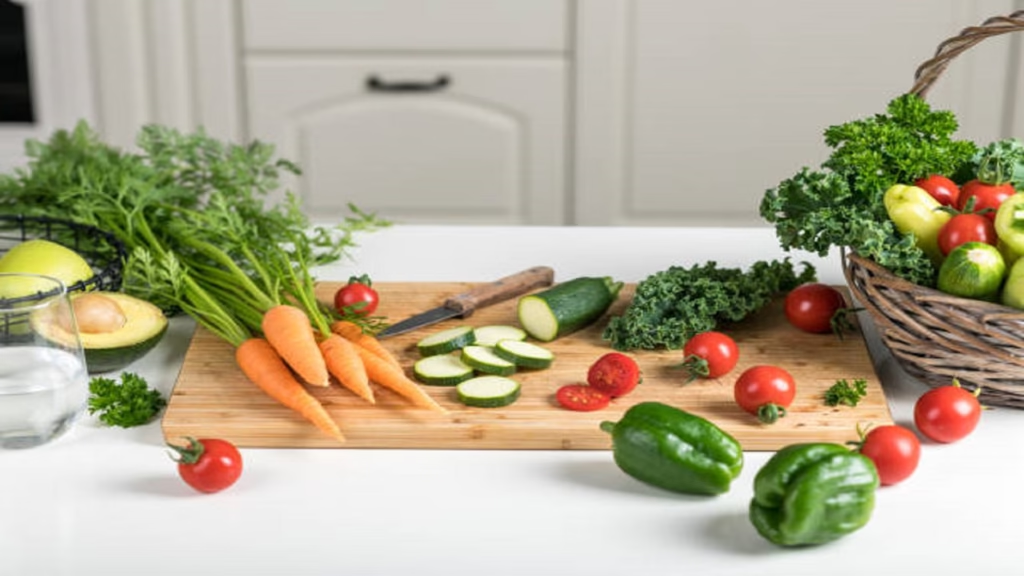
The Power of Wellness Cooking
Why Does Healthy Cooking Matter?
Eating well isn’t just about weight loss—it’s about feeling great, having energy, and fueling your body for daily activities. Wellness Cooking, Health’s Kitchen, focuses on using fresh, nutrient-dense foods that promote overall well-being.
Did you know? 80% of chronic diseases can be prevented by adopting a healthier diet! Imagine how much better you’ll feel when you eat meals that nourish your body instead of depleting it.
Core Principles of Wellness Cooking
- ✔ Focus on whole foods: Say goodbye to processed junk and hello to fresh, natural ingredients.
- ✔ Balance macronutrients: A good mix of protein, fats, and carbohydrates is key.
- ✔ Minimize additives: Less sugar, salt, and preservatives = a healthier you.
- ✔ Cook with love: When you put care into your meals, your body feels the difference.
Essential Ingredients for a Nutritious Cuisine
If you want to cook healthy, you need the right ingredients! Here are some staples to stock up on:
Proteins:
🥩 Lean meats (chicken, turkey)
🐟 Fatty fish (salmon, tuna)
🥚 Eggs
🌱 Plant-based options (tofu, lentils, chickpeas)
Healthy Carbs:
🍚 Whole grains (brown rice, quinoa, oats)
🥔 Root vegetables (sweet potatoes, carrots)
🥖 Whole wheat bread and pasta
Fats That Fuel:
🥑 Avocados
🥜 Nuts and seeds (almonds, chia, flaxseeds)
🥥 Coconut and olive oil
Fruits & Vegetables:
🍓 Berries (blueberries, strawberries)
🥦 Dark leafy greens (spinach, kale)
🍎 Apples and citrus fruits
Flavor Boosters:
🌿 Fresh herbs (basil, cilantro, parsley)
🧄 Garlic and onions
🍯 Natural sweeteners (honey, maple syrup)
By filling your kitchen with these Nutritious Cuisine essentials, you’ll always have the tools to create healthy, delicious meals.
Healthy Meal Prep – The Key to Success
We all lead busy lives, but that doesn’t mean we have to sacrifice healthy eating. Healthy Meal Prep is a game-changer! It saves time, reduces stress, and Health in the Kitchen , and ensures you always have a nutritious meal ready to go.
Steps to Effective Meal Prep:
1️⃣ Plan Your Meals: Decide what you’ll eat for the week.
2️⃣ Make a Shopping List: Stick to whole, nutritious ingredients.
3️⃣ Batch Cook: Prepare large portions and store them in containers.
4️⃣ Use Proper Storage: Keep meals fresh with airtight containers.
5️⃣ Label Everything: Avoid confusion and waste.
Pro Tip: Set aside one day a week to prep your meals. You’ll thank yourself later!
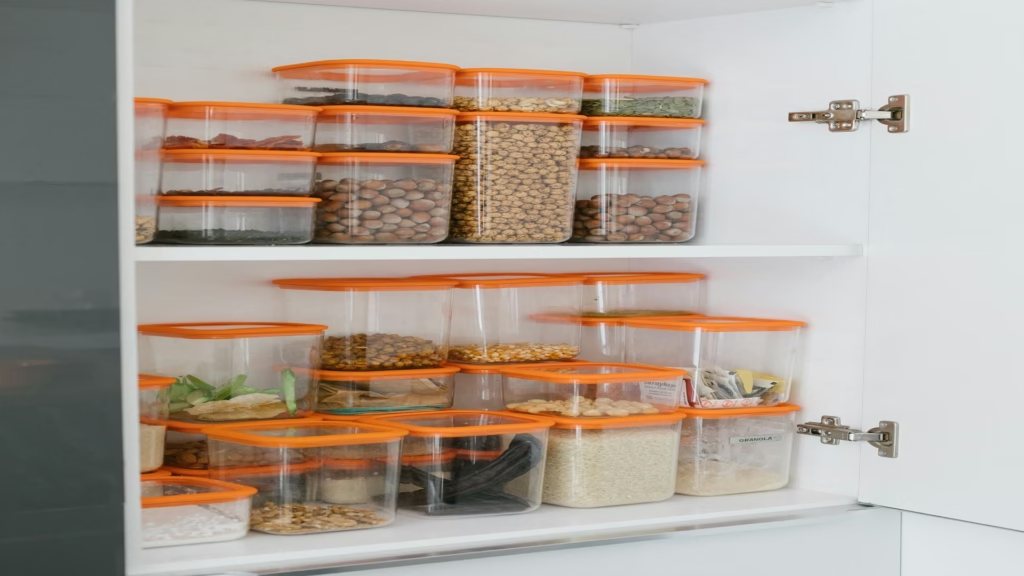
Balanced Diet Recipes for Everyday Eating
A Balanced Diet is all about variety, moderation, and nutrient-rich foods. Here are some simple recipes to get started:
1. Energizing Breakfast: Avocado Toast with Eggs
🥑 Whole wheat toast
🥚 Poached egg
🌶️ Sprinkle of chili flakes and sea salt
2. Power Lunch: Quinoa and Chickpea Salad
🍚 Cooked quinoa
🥒 Chopped cucumbers
🍅 Cherry tomatoes
🧄 Lemon garlic dressing
3. Dinner Delight: Baked Salmon with Roasted Veggies
🐟 Seasoned salmon fillet
🥦 Roasted broccoli and carrots
🧄 Drizzle of olive oil and lemon juice
Eating balanced doesn’t have to be boring—small changes can lead to big results!
Wholesome Cooking Guide – Cooking with Purpose
Cooking isn’t just about throwing ingredients together—it’s an art and a science. We’ll explore the Wholesome Cooking Guide to help you prepare meals that are both nutritious and delicious.
The Golden Rules of Wholesome Cooking:
- ✅ Use fresh, whole ingredients: Processed foods often contain additives and preservatives that reduce nutritional value.
- ✅ Cook at the right temperature: Overcooking can destroy essential nutrients.
- ✅ Opt for healthy cooking methods: Try steaming, baking, grilling, or sautéing instead of frying.
- ✅ Balance flavors naturally: Use herbs and spices instead of excess salt and sugar.
Common Cooking Mistakes to Avoid:
- ❌ Cooking vegetables at high heat for too long – They lose vitamins and minerals.
- ❌ Using excessive oil or butter – Healthy fats are great, but too much can add unnecessary calories.
- ❌ Overloading on carbs and neglecting protein – Aim for balanced meals with protein, healthy fats, and fiber-rich carbs.
Mindful Eating Kitchen – Savor Every Bite
In today’s fast-paced world, mindful eating is a game-changer. Instead of rushing through meals, take the time to appreciate every bite.
How to Create a Mindful Eating Kitchen:
🍽️ Eliminate distractions: Turn off the TV and put away your phone during meals.
👅 Chew slowly: This helps with digestion and lets you enjoy the flavors.
🛑 Listen to your body: Eat when you’re hungry, stop when you’re satisfied.
🥦 Focus on the experience: Engage your senses—look, smell, and taste your food mindfully.
Practicing mindful eating can reduce overeating, improve digestion, and enhance meal satisfaction.
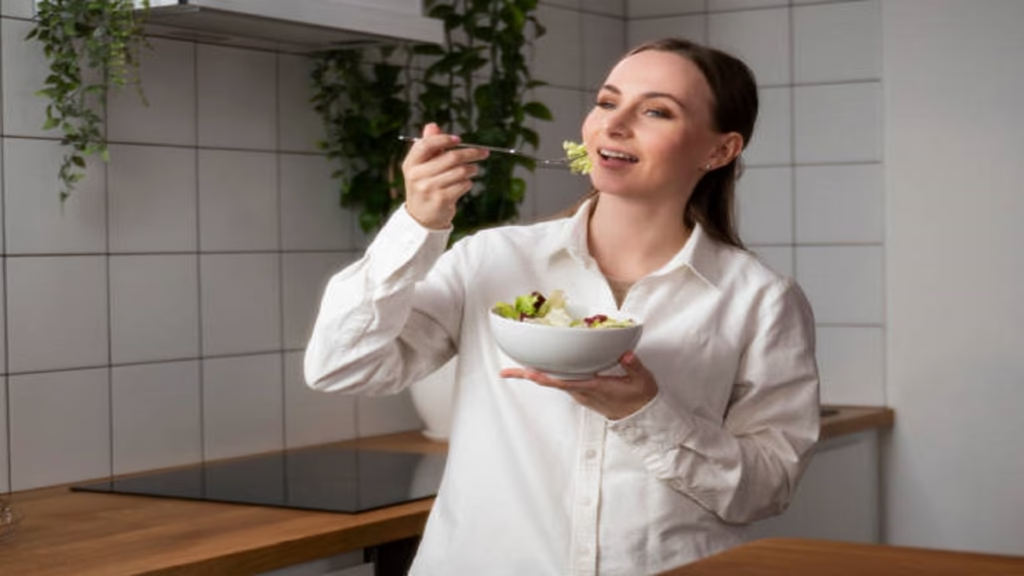
Organic Meal Creations – Choosing Natural Goodness
Organic food isn’t just a trend—it’s a healthier, and Kitchen Health Concious People, more sustainable choice. But is it worth the cost? Let’s break it down.
Benefits of Organic Eating:
🌿 Fewer chemicals: No synthetic pesticides or fertilizers.
🥩 No antibiotics or hormones: Found in conventionally farmed meat and dairy.
🌍 Better for the environment: Supports soil health and biodiversity.
How to Eat Organic on a Budget:
💰 Buy in bulk: Stock up on organic grains, beans, and nuts.
🛒 Shop smart: Prioritize organic versions of the Dirty Dozen (high-pesticide produce like strawberries, spinach, and apples).
🏡 Grow your own: A small herb or vegetable garden can save money and ensure freshness.
Sustainable Food Practices – Cooking for a Better Future
What we eat affects not just our health but also the planet. Here’s how to make your kitchen more sustainable.
Ways to Adopt Sustainable Food Practices:
♻ Reduce food waste: Plan meals carefully and store leftovers properly.
🌱 Eat more plant-based meals: They have a lower carbon footprint.
🚫 Cut back on single-use plastics: Use reusable containers and bags.
💦 Save water while cooking: Don’t let the tap run unnecessarily.
By making small changes, you can protect the environment while nourishing your body.
Clean Eating Recipes – Keeping It Simple and Pure
Clean eating means choosing whole, minimally processed foods. Here are some simple recipes to get started.
1. Morning Detox Smoothie
🥬 Handful of spinach
🍌 1 banana
🥑 ½ avocado
🥛 Almond milk
🧊 Ice cubes
🌀 Blend and enjoy!
2. Nourishing Buddha Bowl
🍚 Brown rice or quinoa
🥦 Steamed broccoli
🥕 Shredded carrots
🥑 Sliced avocado
🫘 Chickpeas
🍋 Lemon-tahini dressing
3. Simple Grilled Chicken with Roasted Veggies
🍗 Lean chicken breast, grilled
🥔 Roasted sweet potatoes
🥬 Side of steamed greens

Holistic Food Preparation – Cooking with a Purpose
Holistic food preparation means thinking beyond just taste—it’s about nutrition, balance, and well-being. This chapter will help you cook with intention. By making small changes, you can protect the environment while nourishing your body.
Principles of Holistic Cooking:
🛠 Use whole foods – Avoid highly processed ingredients.
🎨 Balance macronutrients – Include proteins, healthy fats, and complex carbs.
💧 Stay hydrated – Drink enough water and incorporate hydrating foods.
🌿 Use natural seasonings – Herbs and spices add flavor and health benefits.
💦 Save water while cooking: Don’t let the tap run unnecessarily.
Holistic Kitchen Essentials:
🛒 Healthy Oils – Olive oil, avocado oil, coconut oil
🥗 Superfoods – Chia seeds, flaxseeds, turmeric, ginger
🥩 Quality Protein – Grass-fed beef, wild-caught fish, organic eggs
Fitness-Focused Cooking – Fueling Your Body
Eating the right foods can enhance performance, improve recovery, and boost energy levels. Here’s how to cook for fitness goals. By making small changes, you can protect the environment while nourishing your body.
Key Nutrients for an Active Lifestyle:
💪 Protein: Builds and repairs muscles (chicken, tofu, lentils)
⚡ Complex Carbs: Provides sustained energy (quinoa, oats, brown rice)
🔥 Healthy Fats: Supports metabolism (avocados, nuts, olive oil)
🚫 Recognize fullness – Stop eating when you’re satisfied, not stuffed.
Quick and Easy Pre-Workout Meal:
🥑 Avocado Toast with Eggs
🍞 Whole grain bread
🥑 Mashed avocado
🥚 Poached egg
🌶️ Sprinkle of chili flakes
Natural Ingredient Meals – Keeping It Real
Using natural, unprocessed ingredients can transform your health. This chapter highlights easy ways to integrate them into your meals. By making small changes, you can protect the environment while nourishing your body.
Best Natural Ingredients for Cooking:
🥦 Leafy Greens: Spinach, kale, Swiss chard
🌰 Nuts & Seeds: Almonds, walnuts, sunflower seeds
🍯 Natural Sweeteners: Honey, maple syrup, dates
💦 Save water while cooking: Don’t let the tap run unnecessarily.
Delicious Natural Meal Idea:
🥣 Berry & Nut Oatmeal
🌾 Oats
🍓 Mixed berries
🌰 Chopped almonds
🍯 Drizzle of honey
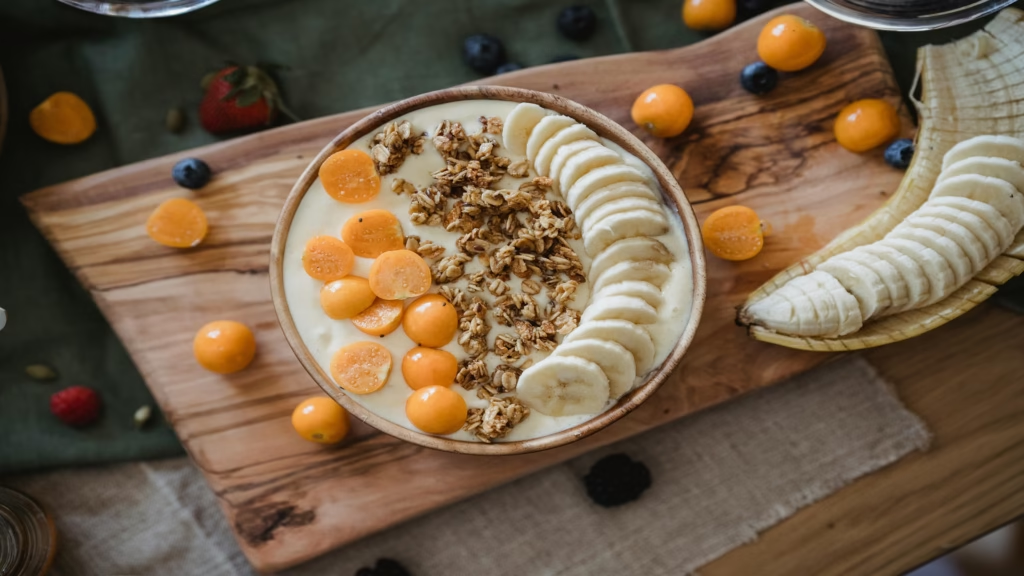
Meal Planning for a Healthier Kitchen
Meal planning helps you eat better, save money, and reduce food waste. Here’s how to get started. By making small changes, you can protect the environment while nourishing your body.
Simple Steps for Effective Meal Planning:
📆 Plan your meals weekly – Write down what you’ll eat each day.
🛒 Create a grocery list – Stick to it to avoid impulse buying.
🍱 Prep in advance – Chop veggies, cook grains, and marinate proteins.
💦 Save water while cooking: Don’t let the tap run unnecessarily.
Example of a 3-Day Healthy Meal Plan:
Day 1:
🍳 Breakfast – Scrambled eggs with spinach
🥗 Lunch – Grilled chicken salad with avocado
🍛 Dinner – Quinoa and roasted vegetables
Day 2:
🥣 Breakfast – Greek yogurt with honey and nuts
🌯 Lunch – Veggie wrap with hummus
🥘 Dinner – Lentil soup with whole grain bread
Day 3:
🥑 Breakfast – Smoothie bowl with chia seeds
🍚 Lunch – Brown rice with tofu stir-fry
🐟 Dinner – Grilled salmon with steamed greens
The Power of Spices – Flavor and Health Benefits
Spices don’t just make food taste amazing—they also have powerful health benefits.
Super Spices to Add to Your Kitchen:
🧄 Turmeric: Anti-inflammatory and immune-boosting
🍃 Cinnamon: Helps regulate blood sugar
🌶️ Ginger: Supports digestion and reduces nausea
🟢 Oregano: High in antioxidants
Homemade Spice Blend for Healthy Cooking:
🟠 1 tsp turmeric
🟢 1 tsp cumin
🔴 ½ tsp paprika
⚪ ½ tsp garlic powder
Mix and store for easy seasoning!
Mindful Eating Kitchen – Transforming the Way You Eat
Mindful eating is about slowing down, savoring each bite, and appreciating food. It helps you listen to your body’s hunger cues, avoid overeating, and enjoy meals more fully.Spices don’t just make food taste amazing—they also have powerful health benefits.
How to Practice Mindful Eating in Your Kitchen:
🧘 Eat without distractions – No TV, phone, or laptop.
🍽️ Chew slowly – Appreciate the textures and flavors of your food.
🚫 Recognize fullness – Stop eating when you’re satisfied, not stuffed.
🥗 Portion wisely – Use smaller plates to encourage balanced portions.
Example of a Mindful Eating Ritual:
1️⃣ Set the table nicely – Even if it’s just for yourself.
2️⃣ Take a deep breath before eating – Express gratitude for your meal.
3️⃣ Put your fork down between bites – Helps slow your pace.
4️⃣ Drink water between bites – Aids digestion and prevents overeating.

Clean Eating Recipes – Keeping It Simple and Nutritious
Clean eating is not a diet—it’s a lifestyle! It focuses on whole, unprocessed foods and removes artificial ingredients, refined sugars, and unhealthy fats.Spices don’t just make food taste amazing—they also have powerful health benefits.
Clean Eating Kitchen Staples:
🥦 Vegetables: Broccoli, carrots, zucchini
🥑 Healthy Fats: Olive oil, avocados, nuts
🍗 Lean Proteins: Chicken, fish, beans
🍚 Whole Grains: Brown rice, quinoa, oats
Easy Clean Eating Recipe:
🥗 Quinoa & Roasted Veggie Bowl
🍚 1 cup cooked quinoa
🥕 ½ cup roasted carrots
🍆 ½ cup roasted eggplant
🌰 ¼ cup crushed almonds
🛢️ Drizzle of olive oil and lemon juice
Instructions:
1️⃣ Roast the veggies with a little olive oil at 375°F (190°C) for 25 minutes.
2️⃣ Mix all ingredients in a bowl.
3️⃣ Top with almonds and a squeeze of lemon.
Organic Meal Creations – Cooking with the Purest Ingredients
Organic cooking means using ingredients free from pesticides, artificial chemicals, and genetically modified organisms (GMOs).Spices don’t just make food taste amazing—they also have powerful health benefits.
Why Choose Organic?
🌿 Better for health – Fewer harmful chemicals.
🌍 Better for the environment – Supports sustainable farming.
🥦 Better taste – Organic produce is often fresher and more flavorful.
Organic Pantry Must-Haves:
🍏 Fruits & Veggies – Organic apples, spinach, berries
🥖 Whole Grains – Organic oats, brown rice, quinoa
🥛 Dairy Alternatives – Organic almond milk, coconut yogurt
Organic Recipe Idea:
🥑 Organic Green Smoothie
🥬 1 cup organic spinach
🍌 1 organic banana
🥑 ½ organic avocado
🥛 1 cup organic almond milk
🧊 Ice cubes (optional)
Blend and enjoy!
Sustainable Food Practices – Reducing Waste in Your Kitchen
Sustainability isn’t just about eating healthy—it’s about reducing food waste, saving energy, and making eco-friendly choices in your kitchen.
Spices don’t just make food taste amazing—they also have powerful health benefits.
How to Make Your Kitchen More Sustainable:
♻️ Reduce food waste – Use leftovers creatively.
🌱 Grow your own herbs – Fresh basil, mint, or parsley.
🛍️ Buy in bulk – Reduces plastic packaging waste.
🗑️ Compost food scraps – Turns waste into soil nutrients.
Creative Ways to Use Leftovers:
🥔 Leftover roasted veggies? – Turn them into a soup.
🍗 Extra chicken? – Make a protein-packed salad.
🍌 Overripe bananas? – Blend into smoothies or bake banana bread.
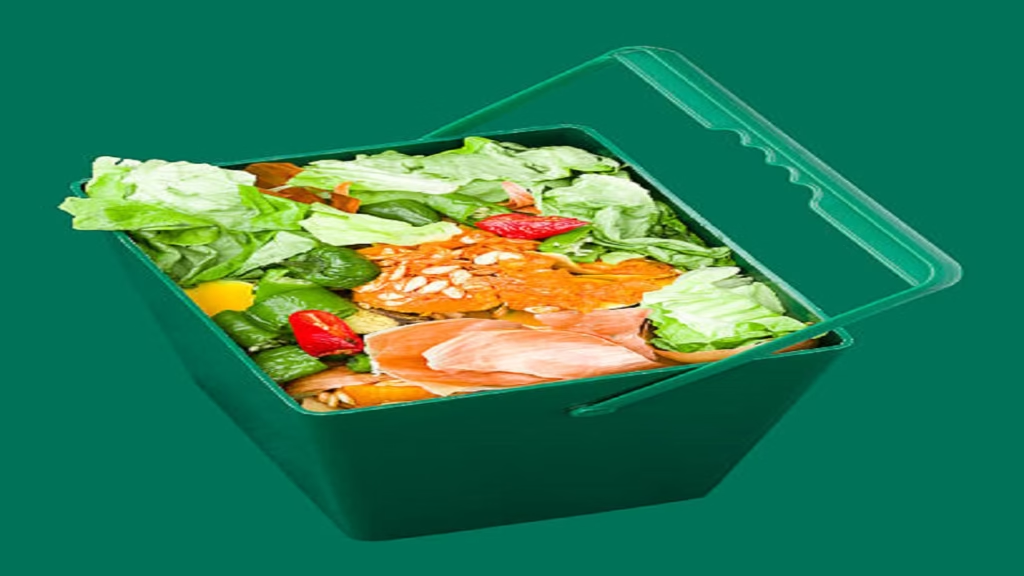
Balanced Diet Recipes – Nourishing Your Body Right
A balanced diet provides carbs for energy, protein for muscle repair, and fats for brain function.
Building a Balanced Plate:
🥦 50% Vegetables & Fruits – Leafy greens, berries, bell peppers
🍞 25% Whole Grains – Brown rice, quinoa, whole wheat pasta
🍗 25% Lean Protein – Chicken, tofu, salmon
Balanced Meal Example:
🍛 Grilled Salmon with Quinoa & Steamed Broccoli
🐟 1 grilled salmon fillet
🍚 ½ cup cooked quinoa
🥦 ½ cup steamed broccoli
🍋 Squeeze of lemon for flavor
Wellness Cooking – Making Food a Healing Experience
Food is not just fuel—it’s medicine! Wellness cooking focuses on healing ingredients that promote overall well-being.
Healing Foods for Everyday Cooking:
🌿 Turmeric – Reduces inflammation
🫐 Blueberries – Packed with antioxidants
🍵 Green Tea – Boosts metabolism
🍠 Sweet Potatoes – Rich in fiber and vitamins
Simple Healing Recipe:
🍵 Ginger Turmeric Tea
🥄 1 tsp fresh grated ginger
🥄 ½ tsp turmeric powder
💦 1 cup hot water
🍯 1 tsp honey (optional)
Let steep for 5 minutes and enjoy!

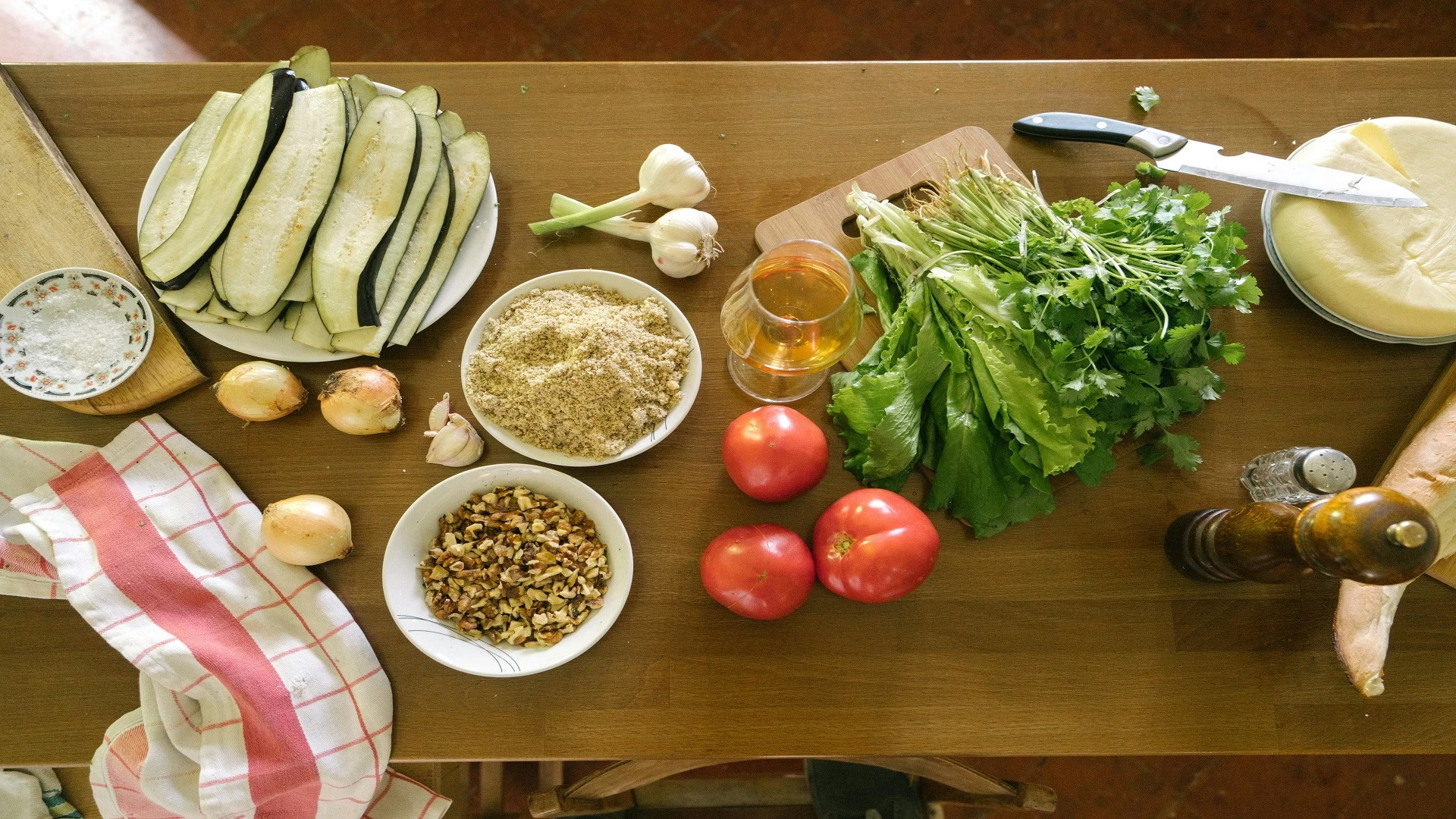
2 Comments